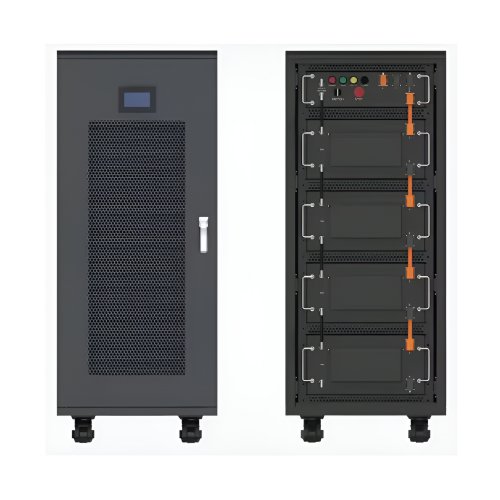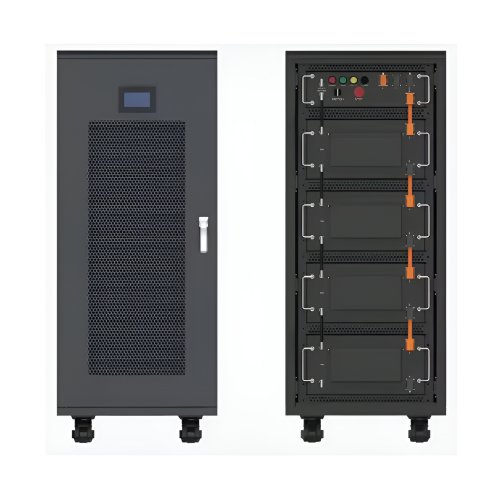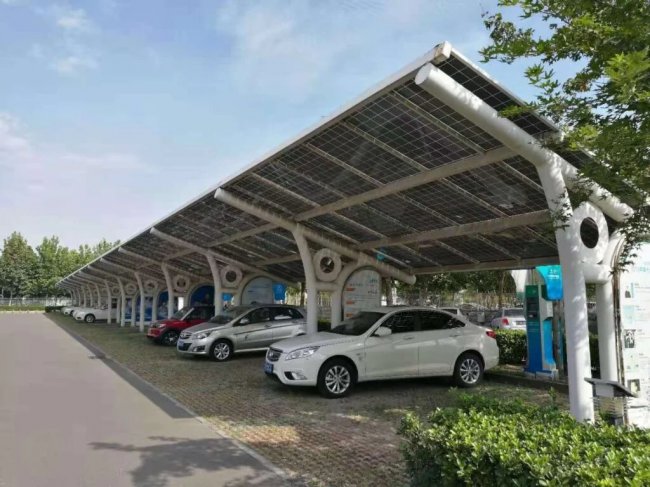Advances In Lithium-ion Diffusion: Unlocking Next-generation Battery Performance Through Materials Engineering And Interfacial Design
The relentless pursuit of higher energy density, faster charging, and longer cycle life in lithium-ion batteries (LIBs) is fundamentally a quest to master the movement of lithium ions. Lithium-ion diffusion—the process by which Li+ ions migrate through electrode materials and across interfaces—is the rate-limiting step that dictates key battery performance metrics. Recent research has transcended traditional boundaries, moving beyond bulk solid-state diffusion coefficients to engineer materials and interfaces at the atomic and nanoscale, heralding a new era of controlled and accelerated ionic transport.
Novel Cathode Architectures for Enhanced Bulk Diffusion
The diffusion bottleneck in conventional layered oxide cathodes (e.g., NMC) is often the slow solid-state diffusion within large, dense secondary particles. A significant breakthrough has been the development of single-crystal cathodes. Unlike their polycrystalline counterparts, single-crystal particles eliminate grain boundaries, which are known to impede Li+ movement and cause mechanical degradation. Studies have shown that micron-sized single-crystal NMC811 exhibits superior capacity retention and reduced microcracking, as the absence of internal boundaries facilitates more homogeneous lithium diffusion and reduces local stress (Qian et al., 2022). Furthermore, research into disordered rock-salt cathodes has revealed a surprising phenomenon: percolation-based diffusion pathways. Although these materials lack the ordered channels of layered structures, a critical fraction of lithium in the lattice can create interconnected pathways for rapid, three-dimensional Li+ diffusion, leading to unexpectedly high rate capabilities (Ji et al., 2019). This discovery expands the design space for high-capacity, cobalt-free cathodes.
Anode Materials: Beyond Graphite's Limits
On the anode side, the challenge is twofold: the slow diffusion kinetics within high-capacity materials like silicon and the formation of the solid electrolyte interphase (SEI). For silicon anodes, which suffer from severe volume expansion, research has focused on nanostructuring to shorten the absolute diffusion path length. However, a recent pivotal advancement is the engineering of the native oxide layer (SiOx). It has been demonstrated that a carefully tuned artificial SiOx layer can act as both a mechanical buffer and a highly efficient conduit for Li+ diffusion, significantly improving the stability and kinetics of silicon-based anodes (Li et al., 2021). For lithium metal anodes, the diffusion of Li+ across the SEI is paramount. The use of electrolyte additives like LiNO3 and LiF-rich artificial SEI layers has been shown to create interfaces with high Li+ conductivity and mechanical robustness, promoting uniform plating/stripping and suppressing dendrite growth (Cheng et al., 2020).
The Solid-State Revolution: Interfaces as the New Frontier
The shift towards all-solid-state batteries (ASSBs) brings the issue of ion diffusion into even sharper focus. While solid electrolytes (SEs) like sulfides (e.g., LGPS) boast superb bulk ionic conductivity rivaling liquid electrolytes, their implementation is plagued by high resistance at the electrode-electrolyte interfaces. This interfacial diffusion barrier is now a central research theme. A major technological breakthrough has been the application of ultrafine interfacial coatings. For instance, a conformal nanoscale layer of lithium tantalum oxide (LiTaO3) or lithium niobate (LiNbO3) on cathode particles has proven highly effective in mitigating mutual diffusion and reducing interfacial resistance, thereby enabling efficient Li+ transport across the solid-solid junction (Wang et al., 2023). Similarly, the discovery of "halide" solid electrolytes (e.g., Li3YCl6) offers a compelling alternative. These materials not only exhibit high ionic conductivity but also demonstrate superior oxidative stability and better compatibility with oxide cathodes, effectively reducing the interfacial diffusion barrier without the need for extensive coating (Asano et al., 2018).
Probing and Modeling at the Atomic Scale
Understanding diffusion mechanisms has been accelerated by advanced characterization techniques and computational models. In situ and operando neutron diffraction and 7Li NMR spectroscopy provide real-time, non-destructive insights into Li+ migration pathways and dynamics within operating electrodes. Concurrently, machine learning (ML) and ab initio calculations are revolutionizing materials discovery. ML potential-based molecular dynamics simulations can now model diffusion processes over longer timescales and larger systems with near-ab initio accuracy, allowing for the high-throughput screening of novel materials with predicted high diffusion coefficients and low activation energies (Xie et al., 2021). This synergistic approach between advanced characterization and powerful computation is rapidly identifying the next generation of diffusion-optimized materials.
Future Outlook
The future of enhancing lithium-ion diffusion lies in the precise and holistic design of entire diffusion pathways, from the bulk of the particle to the interface and into the electrolyte. Key directions include: 1. Multifunctional Interfaces: Designing graded or hybrid interfacial layers that simultaneously provide ionic conduction, electronic insulation, and electrochemical stability. 2. Morphology Control: Advanced synthesis techniques will allow for the creation of particles with precisely engineered porosity, facet orientation, and channel structures to guide Li+ flow. 3. Dynamic Management: Developing "smart" materials and interfaces that can adapt during cycling to maintain optimal diffusion conditions, perhaps through self-healing mechanisms. 4. Beyond Lithium: The principles gleaned from studying Li+ diffusion are directly applicable to other multivalent ions (e.g., Mg2+, Zn2+), where diffusion challenges are even more pronounced due to higher charge density.
In conclusion, the field has moved from observing diffusion to actively directing it. By mastering lithium-ion diffusion through atomistic engineering, interfacial design, and advanced diagnostics, the path is now clear to realizing the full potential of next-generation batteries that are safer, more powerful, and charge in a fraction of the time.
References:Asano, T., et al. (2018). Solid halide electrolytes with high lithium-ion conductivity for application in 4 V class bulk-type all-solid-state batteries.Advanced Materials, 30(44), 1803075.Cheng, X.-B., et al. (2020). Implantable solid electrolyte interphase in lithium-metal batteries.Chem, 6(6), 1318-1345.Ji, H., et al. (2019). Ultrahigh power and energy density in partially ordered lithium-ion cathode materials.Nature, 577(7790), 502-508.Li, T., et al. (2021). Engineering the surface structure of silicon nanoparticles for improved lithium-ion diffusion.Nature Energy, 6(10), 987-995.Qian, G., et al. (2022). Single-crystal nickel-rich cathodes: overcoming the structural stability limitations of polycrystalline counterparts.ACS Energy Letters, 7(1), 356-363.Wang, C., et al. (2023). Atomic-scale coating of cathode materials for all-solid-state batteries: a review.Joule, 7(3), 471-489.Xie, Y., et al. (2021). Accelerating the discovery of materials for fast lithium diffusion by machine learning.npj Computational Materials, 7(1), 84.
Customized/OEM/ODM Service
HomSolar Supports Lifepo4 battery pack customization/OEM/ODM service, welcome to contact us and tell us your needs.


HomSolar: Your One-stop LiFePO4 Battery Pack & ESS Solution Manufacturer
Our line of LiFePO4 (LFP) batteries offer a solution to demanding applications that require a lighter weight, longer life, and higher capacity battery. Features include advanced battery management systems (BMS), Bluetooth® communication and active intelligent monitoring.

Customised Lithium Iron Phosphate Battery Casing
ABS plastic housing, aluminium housing, stainless steel housing and iron housing are available, and can also be designed and customised according to your needs.

HomSolar Smart BMS
Intelligent Battery Management System for HomSolar Energy Storage System. Bluetooth, temperature sensor, LCD display, CAN interface, UART interface also available.


Terminals & Plugs Can Be Customized
A wide range of terminals and plugs can be customised to suit the application needs of your battery products.

Well-designed Solutions for Energy Storage Systems
We will design the perfect energy storage system solution according to your needs, so that you can easily solve the specific industry applications of battery products.



About Our Battery Cells
Our energy storage system products use brand new grade A LiFePO4 cells with a battery lifespan of more than 4,000 charge/discharge cycles.



Applications in Different Industries
We supply customized & OEM battery pack, assemble cells with wiring, fuse and plastic cover, all the cell wires connected to PCB plug or built BMS.
Applications: E-bike, Electric Scooter, Golf Carts, RV, Electric Wheelchair, Electric Tools, Robot Cleaner, Robot Sweeper, Solar Energy Storage System, Emergency Light, Solar Power Light, Medical Equipment, UPS Backup Power Supply.
We can provide you with customized services. We have the ability to provide a vertical supply chain, from single cells to pack/module and to a complete power solution with BMS, etc.


HomSolar (Shenzhen) Technology Co., Ltd
























